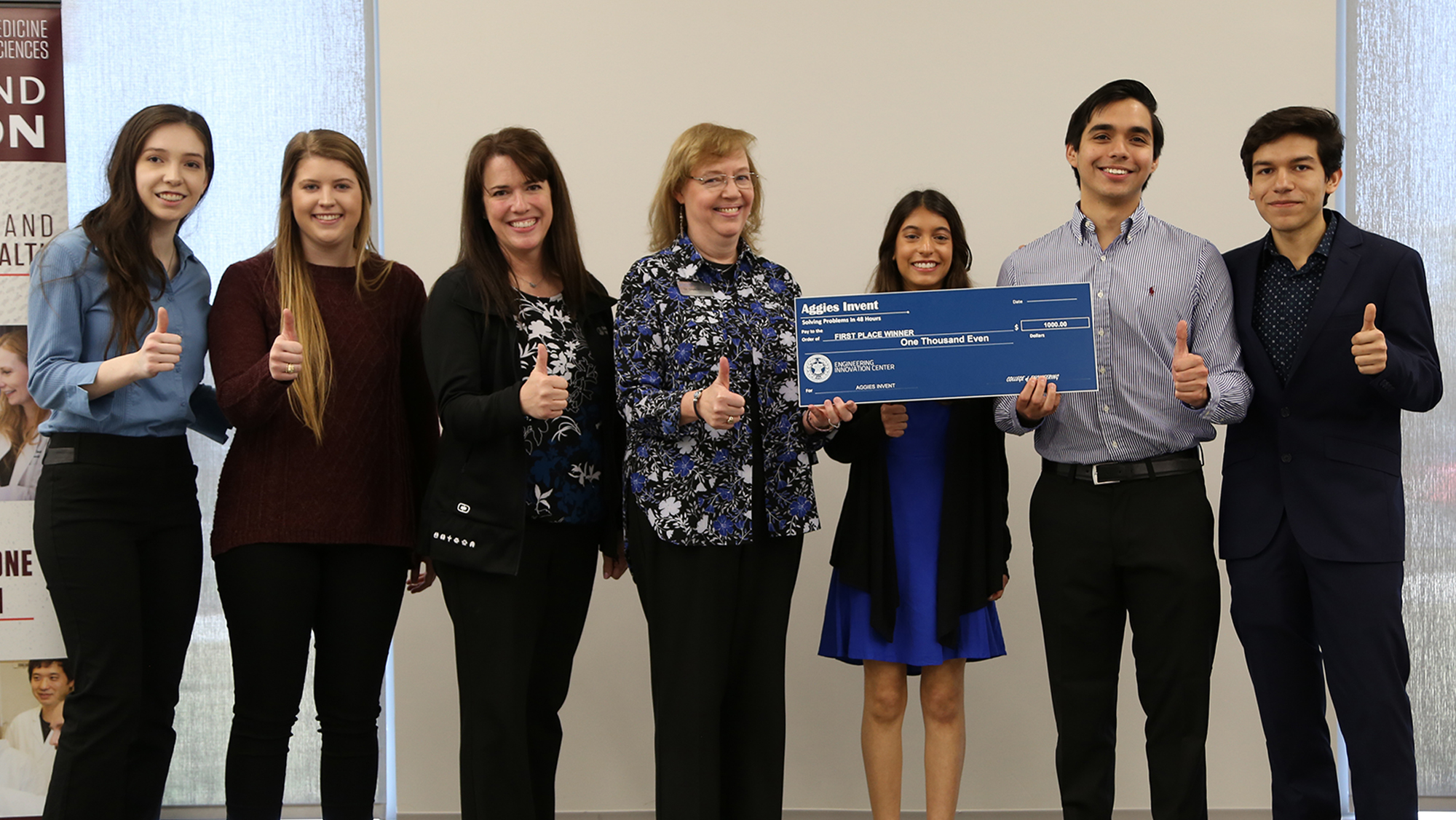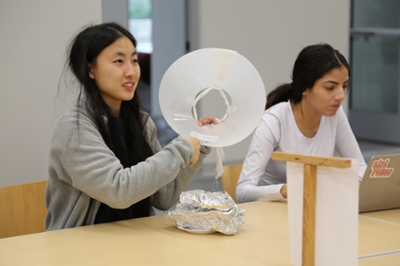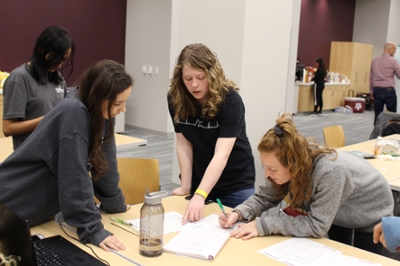
Ten teams, 48 hours and a lot of busy bees.
The College of Engineering and the College of Veterinary Medicine and Biomedical Sciences partnered for Aggies Invent for Veterinary Medicine, which challenged student teams to solve a veterinary health care need, ranging from monitors to check an animal’s pulse during surgery to a way to safely restrain an animal to administer medication. Students were expected to research, design and develop a prototype and then present a business pitch to a panel.
James O’Connell, mechanical engineering senior, said he wanted to participate in the event because of his background in health care. O’Connell was a medic in the Army, and he said he appreciated how the event introduced him to different ways of thinking.
“‘You don’t know what you don’t know.’ That was one of the most profound things anyone has ever said to me. If you approach things only looking through your lens, you’re only going to see things a certain way,” O’Connell said. “Sometimes that’s a good way, but rarely is it the best way.”
While Aggies Invent competitions usually include a majority of engineering students, this one crisscrossed campus to encompass multiple colleges and focuses. Emily Hoskins, first-year vet student, said she signed up to grow and add more variety to the skills on her resume, including working in a team and a leadership role. She said she was worried at the beginning that it would be difficult for the veterinary medicine students to “speak the same language” as the engineering students.

“Everybody did such a great job of making sure everyone was on the same page and breaking down those language barriers,” Hoskins said. “When you get out into the real world, you are going to be working with people who are coming from different facets of the industry, so being able to get out of this small veterinary box and being able to work with people on the engineering side, work with people on the biomedical sciences side was a really valuable experience for me.”
Blending majors in the teams was beneficial to the overall success, said Molly Coon, biomedical sciences senior. Because the students came from a variety of educational backgrounds, they were able to run ideas by and fact check each other.
“Having engineers working with us was crucial because they did all of the circuit work and it was helpful for us,” Coon said. “We (biomedical sciences students) have had animal experience, which helped us know what will actually work in a real-world setting.”
The event even drew a potential future Aggie. Sarah Cate Hyde graduated from the University of Oklahoma and works as a chemical engineer. She decided to pursue a veterinary medicine degree, heard about the event and reached out to the coordinators. She said she didn’t realize how much crossover there was between engineering and medical devices before Aggies Invent.
“We’re making a device for blood clot removal,” Cate Hyde said. “I do a lot of work with troubleshooting piping and vessel problems, so to me this problem is like working on a pipe. It relates in a way that I didn’t expect.”

After two days of hard work, the winning team was G-Sense, comprised of biomedical science and biomedical engineering students who came together to design an earring sensor that can detect glucose levels in cats, which can help monitor diabetes.
“This really taught me it’s okay to make mistakes and to go back to the drawing board,” said team member Elizabeth Mathews, biomedical sciences junior. “I think college puts you in the mindset that you have to reach a certain goal every exam, a certain grade. This helped show me that you can be at 99 percent and go back to zero and still come up with something that takes you to that 100 percent.”
“You can actually make something in 48 hours,” said team member Guillermo Palou, biomedical engineering junior. “You think you need a lot of time to have a proof of concept and everything, but in 48 hours we were able to prove the concept and try it with a prototype.”
G-Sense will continue to innovate their idea in preparation for the Veterinary Innovation Summit in April, hosted by the College of Veterinary Medicine and Biomedical Sciences.
They’ll all be surprised with what they come out with themselves. They’ll grow professionally and learn how to present and make pitches. The benefit to these students is incredible.

Scott Roth, first-year vet student, said he really enjoyed getting to meet and collaborate with like-minded people. He said future partnership would be useful for veterinary students to help them think differently and break the mold of the daily grind.
“We have a lot of day-to-day problems that we just deal with and work around in the clinic,” Roth said. “Getting to talk and meet with people who say, ‘Well we can easily solve this,’ it makes you as a vet student think in a whole new way. Maybe instead of spending five hours every day cleaning all the dog cages, we can have an innovative design that self-cleans or something along those lines.”
Dr. Eleanor Green, dean of the College of Veterinary Medicine and Biomedical Sciences, said Aggies Invent is one of the most exciting events for students, and their lives change throughout the weekend.
“They learn to work in teams, they learn to be innovative and inventive, and they learn what their skills are,” Green said. “They’ll all be surprised with what they come out with themselves. They’ll grow professionally and learn how to present and make pitches. The benefit to these students is incredible.”
Mary Chandra, biomedical sciences freshman, said the event gave her newfound confidence.
“Coming into this, I really didn’t think I could think at this high of a level,” Chandra said. “I thought all of this information would be way too far above my skillset. Anything is possible if you put your mind to it."
For Gilberto Flores, biomedical engineering junior, the event made him realize that developing new solutions does not always require the latest equipment.
“Sometimes, to create a product you don’t have to have the highest end technology. Being creative and knowing how to use what you have is more important,” Flores said.